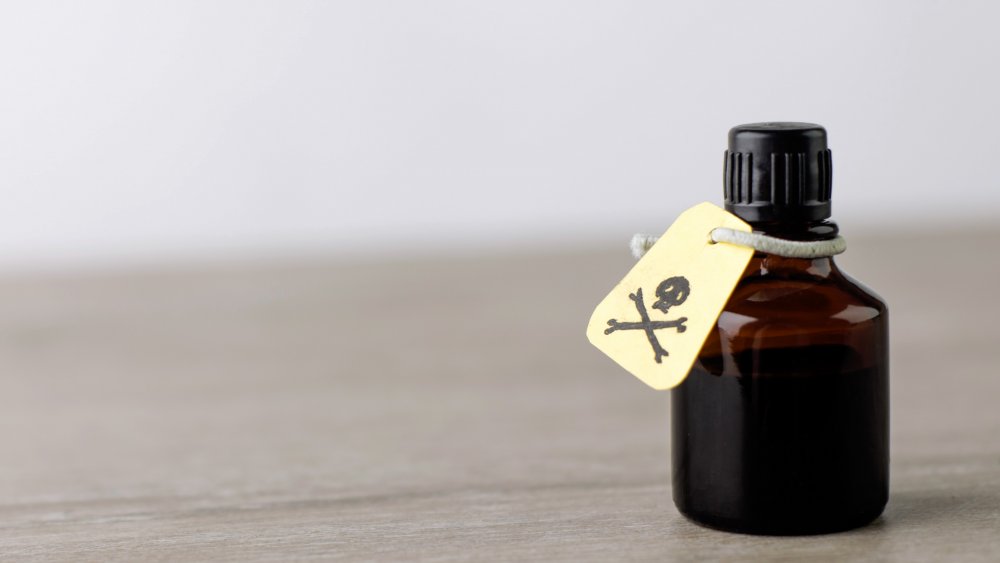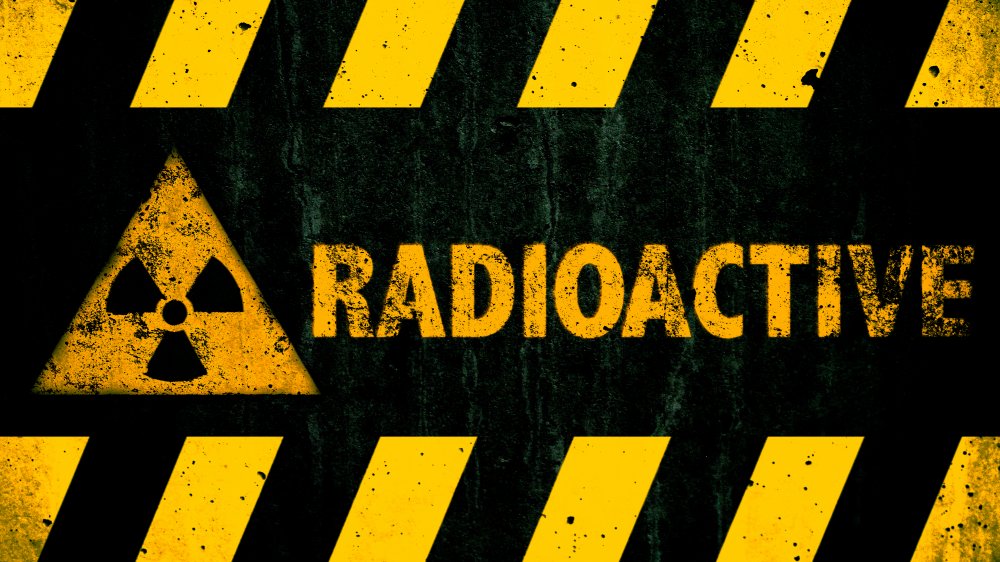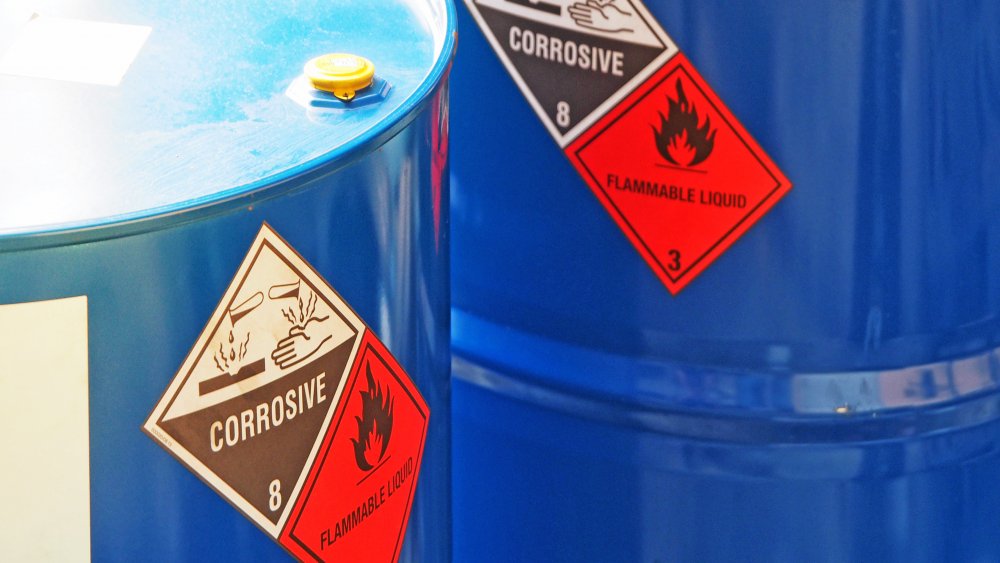This Is The Most Dangerous Element On Earth
A lot of life depends on context. A lit match offers illumination in the dark, or starts a campfire for marshmallows, or lights the candles for a romantic dinner. Light a match around a gas leak and there might be a slightly different outcome. Iron is a nice, dependable metal, used for all kinds of things, including steel. Turn it into an anvil, toss in a coyote and a road runner, and again — different outcome. So when we're talking about elements, especially "most dangerous elements on Earth," there's sort of a "place for everything, and everything in its place" principle involved. There are also differences of opinion as to what's "worst" or "worster" or "worstest of all worsts." ThoughtCo points out that there are 118 known chemical elements, and three classifications of "nastiness": radioactivity, toxicity, and reactivity. The last one is particularly unpleasant, since it refers to elements that "can ignite spontaneously — or even explosively, and generally burn in water as well as air."
Before we progress, let's look at that "118 known chemical elements" statistic. Planet Deadly hedges that particular bet: "118 elements that are known of" (emphasis added). Do we know, or don't we? "The reason for being vague is that some are through to exist but have never been observed." Apparently elements, like sasquatch, like a good game of hide-and-seek.
There was a reason why hatters went mad
Working with the "118 known" figure, it's further pointed out that 98 of those elements occur "naturally." Not only does context count, but so does amount (see "Coyote v. Road Runner" citation, above).
As we've learned more about the natural world, humans have stopped using some elements for some applications. For instance, mercury (we now know) is not people-friendly. Once used in the hatter trade — hence, Lewis Carroll's Mad Hatter — mercury exposure will have ill effects on organs, but is especially harsh on neurological systems, damaging memory, muscle control, and coordination. There's a very good reason why we no longer use mercury-filled personal thermometers, especially for biters.
While we're on the subject, be careful how you handle those compact fluorescent bulbs, or CFLs. Frequently touted as providing significant energy savings over run-of-the-mill incandescent bulbs, CFLs contain mercury, as do other fluorescent lighting products, like tubes. When they've given up the ghost, please dispose of them carefully — and intact. No "Hey! Let's play light sabers!" Please.
Sometimes it's best to pay attention to signs
Speaking of saving energy: Interesting Engineering describes cadmium as "a heavy metal that is both carcinogenic and genotoxic and, therefore, a potential mutagen." That can't be good. Ah, but one of its uses is in solar panels — great engineering idea but, like so many things, something to be handled with great care, especially when it's time to dispose of them.
Older homes can be problematic in the extreme. If you just can't wait to roll up your sleeves and tackle that Victorian-era house ("I just can't help but think what it needs most is love"), it's good to remember that toxins were everywhere in those care-free, yet uninformed times. Perhaps most people know that lead-based paint was common — and deadly, when ingested, say, as pretty flecks on the floor where a toddler can find and consume them. But did you know that Victorian wallpaper often included arsenic? Arsenic is kind of a gimme on this list — if you watch enough old detective movies, you know that arsenic is poison, right?
There are lots of ways to die by chemistry
And yet arsenic poisoning is an issue world-wide, because of contaminated water sources. Sufficiently diluted, the effects won't be immediate, as Interesting Engineering says, but the cumulative damage is extreme, including kidney failure, nausea, vomiting, and bleeding. Large doses cause death, but it's a slow and agonizing way to go.
In yet another case of "The More You Know," in the days before antibiotics, arsenic was used as a treatment for syphilis. You might think, "Well, that can't be good," and you'd be right, except that the treatment was introduced as a replacement for an earlier therapy which involved mercury. Nowadays, there's some research being done that utilizes arsenic to treat leukemia.
Differences of opinion aside, nearly everyone agrees that the top of any such list belongs to polonium. In its defense, it occurs naturally, rather than emerging fully formed from a forgotten basement lab at Oscorp. It's also rare, so you probably won't stumble across a polonium nugget next time you're looking for agates at the beach. If — big if — you do come across it, it'll give off a tell-tale blue glow. It's also 250,000 times more toxic than cyanide. According to Medical News Today, a "trace" of polonium was used to poison the tea of Alexander Litvinenko. It took him 23 days to die. If glowing blue you see, let it be. Please.



